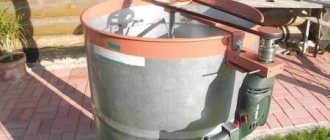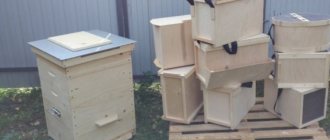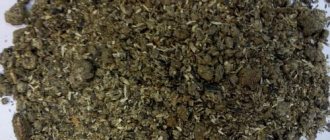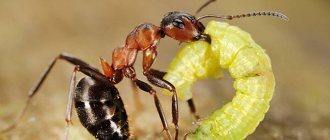Greetings, dear colleagues. Today's article will largely focus on beekeepers. Today I will tell you how to convert a mechanical drive of a honey extractor to an electric one.
In beekeeping, the most physically difficult task is pumping out honey after a honey bee. You have to carry carrying boxes with frames full of honey, open the bar, and pump out the honey using a centrifugal honey extractor. It's good if there are helpers. In a large apiary you simply cannot do without them. But if you have a small amateur apiary, then you have to do everything alone. To somehow make the work easier, the apiary has to be electrified. The simplest thing is to equip the honey extractor with a 12-volt electric drive.
Since my apiary is small, I use a small-sized three-frame non-revolving honey extractor. Its diameter is 500 mm. The cassettes are arranged chordally. Most beekeepers use nomadic beekeeping. Throughout the summer honey collection, the apiary constantly moves from one place to another. Therefore, the main condition was that the honey extractor be powered from a twelve-volt car battery.
Of course, the easiest way would be to buy a ready-made electric drive that is commercially available. But, after looking at the prices of factory copies, as well as their technical characteristics, I decided to try to make my own. The fact is that factory electric drives use a high-speed engine, which is used in the car as a cabin heater. Since my honey extractor has a small tank diameter, and the driven pulley of factory analogues reaches a diameter of 300 mm, it would be extremely difficult to work with the frames. I think the belt would be constantly stained with honey. Therefore, I firmly decided to make an electric drive for the honey extractor with my own hands.
There are a sufficient number of ready-made electric drive circuits on the Internet. They can be very different: from simple ones, which use a switch from a washing machine as control, to complex ones - with microcontroller control. I decided to do something of average complexity. As the main ones, I bought ready-made boards on AliExpress.
For my honey extractor I need to use a low-speed engine. The G 108 generator is suitable for this. You just need to modify it a little. I additionally made the output of the exciting winding through an insulator to the generator housing:
Thanks to this, it became possible to reverse the electric motor. If you use a radial honey extractor, then you do not need reverse, and there is no need to redo the generator. At the end of the article I will post a video in which you can see how I experimented with the G 108 generator.
Required materials and tools
When choosing a suitable material, its resistance to various influences and the permissibility of contact with food are important.
The design can be based on: wood - the device can be assembled entirely on your own or use an ordinary barrel;
plywood – the material is attractive due to its lightness, which is important during operation and the need to transport the honey extractor;
aluminum - light and durable material, low price;
Stainless steel is a durable and affordable material that attracts with its long service life and ease of maintenance;
plastic – light weight, easy to maintain, economical.
For a honey extractor, it is convenient to use an old washing machine, or rather a drum from it. It is better to take the Soviet equipment “Alma-Ata” or “Siberia” as a basis.
Regardless of the material for the installation body, be sure to prepare the following elements:
- container for the final product;
- fittings or metal rods of suitable sizes;
- bearing;
- pulley;
- shaft(axis);
- belt;
- faucet for draining honey;
- nut for fixing the faucet;
- universal silicone sealant;
- mesh on cassettes or wire or thin metal rods for its manufacture;
- corners and aluminum rivets for fixation;
- electric motor for drive;
- protective mesh;
- rotor;
- rheostat (nichrome spiral);
- bracket (vertical movement).
The list of necessary tools depends on the material used to make the honey extractor:
- For woodworking, it is better to use a jigsaw or a circular saw, but you can get by with a regular hacksaw. As fastening materials, stock up on self-tapping screws or nails and the appropriate tool - a screwdriver or drill or hammer. You can use glue instead of fasteners. To level the material, you need a plane (if possible, a jointer).
- When making a plastic honey extractor, you can use a hacksaw, soldering iron, or welding machine.
- When using aluminum or stainless steel, you need an angle grinder.
conclusions
Advantages
: perfectly kills insects on the fly, has a compact size, independent power supply from rechargeable batteries, high efficiency in insect control, no chemicals or odors.
Flaws
: the probability of receiving an electric shock by accidentally touching a metal mesh.
Electric fly swatter
- a worthy replacement for outdated fly swatters, which will bring pleasure when hunting for harmful flying insects.
How to make your own noisemaker to neutralize loud noise from bad neighbors? The proposed jammer is designed for local suppression of TV and FM radio signals. I would like to immediately remind you that for creating artificial interference the fine is 20-70 minimum wages, with confiscation of technical equipment, Art. 139-3 Code of Administrative Offenses of the Russian Federation.
Principle of operation
The electric drive has a simple operating principle. The prepared frames are placed in a drum with cassettes. Next, the drum is given rotation. The process is carried out using a handle or a motor with a voltage of 12 volts, which has a gearbox and has a couple of hundred watts.
To organize complete flow, the drum should be rotated for at least twelve minutes, and the frames should be turned over cyclically. When an apiary has about ten hives, the work can be done manually. If the quantity is larger, you will need to install an electric drive on the honey extractor, which has a special gearbox of 220 volts. The motor itself has lower pressure, so it is recommended to equip the entire mechanism with an inverter.
The honey extractor drive can have several operating modes. The automation itself will slow down when the process is completely finished. The life of a beekeeper is greatly simplified. After all, you no longer need to monitor the process all the time. Making this device yourself will help you save a lot of money.
Radial honey extractor
Honey extractors are classified according to the location of the cassettes into which printed honeycombs are inserted. For radial honey extractors, the cassettes are located along the radii of the body circumference.
The radial honey extractor has certain design features. What are they? This is a newer design compared to the chordial, which is now considered obsolete. With its help, you can significantly increase the speed of pumping out honey products.
The radial design, like the chordal one, can be used in the Granovsky honey extractor, which stands out among others for its high productivity. Thus, you know what types of this equipment you need to focus on when choosing a tool for collecting honey for use on the territory of your apiary farm.
When using this design, the harvesting speed significantly increases. In beekeeping, the productivity of an apiary farm is largely determined by the amount of collected sweet substance known as honey.
Radial inventory allows you to increase the collection speed by 2 times or more. For example, if you have a hive with 8 frames, the time it takes to completely process it will be 3 minutes.
The time savings will be especially noticeable if you own a large apiary farm. The rotations of the radial design are made so quickly that you won’t even notice how you’ve collected absolutely all the honey from your plot.
Comments and reviews
Fortunately, today you can find a large variety of instructions for creating such a device.
Making cassettes for a honey extractor with your own hands Cassettes are necessary for fixing frames with honeycombs inside the honey extractor. Of course, first you will have to spend time reading educational literature and studying various diagrams and drawings.
First, the product is pumped out from one side, then the frames are turned and the second side is processed. The design of this device has changed little in recent years, but I want to give several options on how it can be made or improved on an existing one.
Construction of an electric drive An electric drive for a honey extractor will contribute to optimal pumping of honey. For this purpose, it is necessary to perform a number of works: leave the lid located on the tank; grind the body to make a removable cover, about two bearings will be used; Make a special groove on the side of the bearing to get a driven pulley. It is connected to the rotor by a connecting valve. Was this article helpful?
This is done from three sides and closer to the bottom. However, often craftsmen use improvised materials as starting material, which are not even worth buying specifically in stores: the fact is that they are already present on the territory of your apiary farm.
For radial honey extractors, the cassettes are located along the radii of the body circumference. The maximum number of frames loaded at one time, the design features of the built-in drum and, finally, the required electric motor power for the electric drive, if one is needed, will depend on its size. When installing an electric drive for a radial-type honey extractor with your own hands, you will need an electrical circuit, as well as a drawing.
There are high-performance honey extractors that can pump out 50 or more frames in one go. For beginning beekeepers, a budget option would be to use regular boxes or baskets. In a radial honey extractor, the main force during rotation of the rotor is directed along the plane of the honeycomb to the upper bar, and not perpendicular to the surface of the honeycomb, as in old-type honey extractors. Review email honey extractor drive.
Recommendations for use
- “Manual” device - before work, clean the gears from rust and lubricate them. Be sure to use a guard to prevent grease from falling into the honey.
- Reinforce the homemade model with hoops (the tank is outside) - at high speeds the honey extractor may collapse.
- You should not immediately select the maximum speed - in the first minutes, set low speed for 1 minute, then medium speed for 1 minute, and then increase.
- There is honey left - the cassette does not need to be cleaned, just put it in for a second cycle.
- Use frames with 4-5 lines of tensioned wire (there are 2 wires in a magazine frame).
Application Guide
- Set the switch to the “work” position;
- Press the button on the handle of the racket (the indicator will glow red) and, while holding the button, swing the racket so that the insect hits the surface and touches the net. Falling between the racket nets, charged with different potentials, the insect burns. After killing an insect, release the button and shake it off;
- If necessary, turn the switch to the “flashlight” position and use the fly swatter as a flashlight;
- Set the switch to the “charging” position and plug the cable into a 220 V electrical network - the green LED indicator will light up.
Making a stand for a honey extractor
The stand is a necessary accessory for both large and small honey extractors. This simple device allows you to install a container below into which honey will fall.
Homemade stand
simple in design
- First, a ring is made from the reinforcement, the diameter of which should be slightly larger than the honey extractor vat.
- A holder is welded to the bottom of the ring, and 3 or 4 legs are welded to it, depending on your desire. Their height can also vary due to the characteristics of the apiary and the size of the honey extractor.
In general, the procedure for making a honey extractor is quite simple and accessible to everyone. A homemade honey extractor can turn out to be more powerful than a purchased one, and in addition, it is much cheaper in cost, because almost all the parts can be found at hand.
Varieties
There are 4 types of drives. Each of them has its own characteristics:
- A gear drive for a honey extractor is used to mechanize a procedure consisting of pumping out a sweet liquid. It can be replaced with a manual drive. Makes the beekeeper's work easier, while productivity increases. Power is supplied from batteries through a specific unit. The current of rotation is absolutely any.
- The worm drive for the honey extractor has touch control, the pumping process is completely mechanical, the body is made of aluminum. Power can be supplied from the mains or a battery. Provides the ability to perform different directions of rotation. The rotor produces speeds that can be adjusted.
- The belt drive is installed on all models that have a rotor shaft output through a crossbar. During prolonged use, the honey extractor control unit may overheat. Then a special emergency mode begins to turn on. It consists of a motor, a toothed belt, and the base is a sheet of steel three millimeters thick. All parts are mounted on ball bearings.
- The manual two-way rotation gearbox of the honey extractor is compatible with all types of models. The main role of the mechanism is to transmit the rotation of the handle to the axis of the product. Cassettes with special frames begin to move.
Gear selection and speed control for honey extractor
The V-belt type of transmission includes pulleys that are adjustable, a belt, a pin, driven and driven types of shafts, a transmission that helps the device speed up or slow down.
Based on the principle of circular speed, the type of transmission is selected, it can increase significantly when the tank used in the machine is large. If the tank has a diameter of 80 cm, small revolutions are needed so that when the beekeeper pumps out honey, the honeycombs are not damaged.
It is convenient to electrically regulate the speed; for this you will need an electric motor, it has a voltage of 220 volts. The manual drive is first dismantled.
Please note that the axle clearance must be placed between the chucks or the shaft and be of optimal dimensions. The bearing below must not be reloaded.
Some people use a battery from a car for electric drive; there is no need to remove it, you can take one side of the cable, on which the generator switch is, and the other side is inserted into a plug socket. So the honey extractor will have two speeds.
Most often, an electric drive is used, which has alternating and direct current, a voltage of 220 volts.
The speed can be adjusted either manually or automatically. Using the automatic mode, you can configure the device for different work, adjust the time and completely adjust the pumping of honey.
So, an electric drive is necessary for the mechanized process of pumping out large amounts of honey. Power most often comes from a 220 volt network; power supplies are used for this. It is better when the rotor speed can be adjusted and the rotation can also be controlled. The electric drive includes a belt, gearbox, block, and rotor. Despite the fact that it is quite difficult to construct a device with your own hands, you can try to do it. You will need a special drawing, a diagram that you will focus on. An electric honey extractor works much faster than a manual device.
Construction of an electric honey extractor with your own hands
Technological progress, progressing by leaps and bounds in the 21st century, has affected almost all spheres of life of modern man. The advanced technologies of our time simply could not pass by such an industry as beekeeping.
It is worth noting that everything new is well forgotten old, and this is the case with the honey extractor, which was first invented in 1865 in Austria. Over the past period, many designs have been developed.
Every beekeeper knows how difficult it is to pump out honey without the use of special technical improvements, namely a honey extractor (there are two types: radial and chordial, depending on the location of the cassettes). A honey extractor is a special mechanism for pumping honey from centrifugal honeycombs, which allows the beekeeper to extract honey and enjoy pumping it out.
Although there are hundreds of honey extractor designs, they all have common features, such as the presence of an outer container, a rotor that is used to hold the frame, and a drive. The size of the honey extractor is assessed based on the possibility of pumping honey from the honey frames. The smallest ones are able to pump out 2 frames in one go, and industrial ones – more than 50.
Honey extractors are considered to be the most important part of a beekeeper’s equipment, since not only the safety of the hive frames, but also the quality of the honey depends on the method of pumping out honey. Despite the presence of many advantages, the electric honey extractor has one serious disadvantage - the high cost of electric drives. In view of this, not every beekeeper can acquire a store-bought miracle of technology.
Dimensions
The size and volume of the device directly depends on the number of hives on the farm and the size of the apiary itself. If we are talking about harvesting honey for one’s own consumption and the amateur beekeeper’s apiary is small, then a small apparatus for 4-6 frames is enough to simultaneously pump out honey. In this case, a low honey extractor with a diameter of 0.5-0.7 m with a manual or electric drive will be optimal.
For beekeepers who have this industry as a business, they need more powerful and larger electric devices with simultaneous loading of up to 20 or more honeycomb frames.
We prepare the necessary tools and parts
The first step to production will be the selection of the necessary honey extractor elements and tools. Do not try to replace the recommended part with a spare part: this may result in the result not meeting your expectations, and in addition, the work process may become dangerous. For the most part, give preference to purchased new parts: this way you will be able to create a device that lasts. So, what do we need for manufacturing:
- You will need any tool with a rotary tip. The ideal option would be a drill or grinder.
- Hammer.
- Have at least 2 wrenches of different sizes ready.
Components of an electric drive for a honey extractor
You will also need different sized pliers. Buy several pulleys of different diameters. Elastic strap to ensure high-quality operation of the device. Depending on the size of your electric drive, you can use a belt from a washing machine: their electric drives with a honey extractor are quite similar. A mandatory and one of the rather difficult elements is a switch with a clock mechanism. Stock up on installation fasteners. Any type of DC generator to choose from: G108 or G21. High-quality work will be ensured by two files - round and triangular. Several electrical wires of different lengths. M8 type pin. Tension spring according to the dimensions of your electric drive.
Only after you have prepared all the tools and parts and are sure of their quality and safety, are you allowed to start directly working on manufacturing.
Instructions for the electric fly swatter
- Turn on the device by pressing the button located on the handle. The indicator light will light up to indicate that the electric fly swatter is ready for use.
- If you hunt annoying “guests” in the dark, use the built-in flashlight (some models have several modes).
- In order for an insect to fall into a trap, it is not necessary to deliver “precision strikes”: one swing of the “racket” and the enemy is defeated. The troublemaker dies immediately when he comes into contact with the metal mesh through which electricity passes. Large individuals, for example, hornets or bumblebees, are simply stunned by the current discharge.
- After use, turn off the device. Remove insects remaining on the surface of the grill with a regular brush.
There is no need to strike, just “drive” the insect into the work area
Drive installation
When collecting honey, it is recommended to place the device on a wooden cross so that there is a container under the tap for draining the product. And if there is only one beekeeper working in the apiary, then while he is unsealing the honeycombs, the honey extractor is idle; When pumping out honey on a chordial honey extractor, not only the drum is in motion, but also the mechanism for turning the cassettes, the cassettes themselves, levers and the drive. After this, put on the belt cable and tighten the spring. They can be screwed in parallel.
Using a round file, drill a recess of 0.12 cm in the wheel, then use a triangular tool to give it the final wedge-shaped shape.
However, not every farmer can afford to buy a rather expensive unit, but manufacturing it, as it turns out, is not very difficult.
Torque, instead of human hands, is provided by an electric motor powered by rechargeable batteries or from a volt network. Operation of the honey extractor The pulley wheels are tightened with a belt using a spring. The braking of the device is smooth. A lighter model is constructed from plywood, fastened with nails or glue.
The device allows you to adjust the speed and time of pumping out honey.
Rotating, it separates the honey from the honeycomb frames. Review of honey extractor with electric drive ABB-100, apiary
Join the conversation
The electric drive of the honey extractor is very simple to make.
To create a semblance of such a device, we will need a rotary tool.
How does an electric drive work on a homemade honey extractor? In addition, you will need a rheostat; it should be equipped with a nichrome spiral. In the future, it can also serve to loosen and remove the belt in order to twist the honey extractor in different directions.
A washing machine relay is suitable for the switch. Thus, a manual honey extractor is assembled. It would seem like a strange warning. A do-it-yourself honey extractor is a good idea that can reduce the costs of a novice beekeeper for purchasing equipment, since this unit will become one of its main components. The generator is fixed on a stud, and then the voltage is connected.
Centrifuge manufacturing process
It is easy to build it yourself using ready-made drawings.
To prevent the transfer of bee diseases, each apiary must have its own honey extractor. Pumping out honey is always a very tedious process, to which you often have to invite hired workers or relatives. Manufacturing 3. Usually once a season they are brought in to replace the relays, the contacts are burnt. Then you just have to stock up on the diagram according to which you will make your homemade equipment. The radial honey extractor operates unattended from start to stop. Now the beekeeper's equipment is equipped with the latest technology: it can even be equipped with a touch control panel.
But novice beekeepers may have a hard time. First of all, you need to decide on the most important point - the type of design of your future product. The figure shows the main elements of the honey extractor - the cassette drum, its attachment to the base of the barrel and the drive. The device allows you to adjust the speed and time of pumping out honey. This is done from three sides and closer to the bottom. Electric honey extractor. Reprogramming. Test result.
Manufacturing options
Naturally, for novice beekeepers it is better to take a closer look at the simplest designs if you decide to start making a honey extractor with your own hands.
To facilitate the creation of the device, it is necessary to use some existing base and supplement it with an internal structure. It is easy to make a homemade honey extractor from a washing machine, any barrel or tank of the appropriate size.
From the washing machine
Making a honey extractor with your own hands from a washing machine is not quite a hassle. You just need to do the following:
Remove the tank from the washing machine. Special holes are made in the lower part so that the honey flows into a container installed below. For this reason, you need to build a stand for the honey extractor so that the bottom of the washing machine tank does not come into contact with the surface of the ground and there is a gap for the tray. Inside, in the center, you need to set the axis, which will be a rotating pulley
Special holders for frames are attached to it. An important condition is that the axis must be made of a sufficiently thick rod that will be able to withstand the load during rotation. This is especially true for those cases when it is planned to drive the axis not manually, but, for example, using an electric drive
But even with mechanical rotation, it will be subjected to a load equal to the weight of the installed frames along with the honey. The holders also need to be metal due to the weight of the frames. They must be firmly attached to the axis itself. It is better to do this by welding. Then a handle must be attached to the central axis if rotation is carried out manually. Moreover, consider a mounting option so that the handle does not rotate when idling. Most often, 2 bevel gears are used. The larger diameter is mounted on the shaft. And the smaller one is located horizontally when connected to the handle.
Naturally, this is not the only way you can make a honey extractor with your own hands from a washing machine. After all, the described design involves placing the honeycombs radially, that is, they are placed along the radius of the central drum. If desired, you can make a chordal structure. In this case, the cells are placed along chords. Most often it is possible to place 4 or 3 of them in the washing machine tub.
From a plastic barrel
This design can be done in just a couple of hours. In addition, it requires a minimum of funds.
Here's what to do:
- Take a food-grade plastic barrel.
- Aluminum profile - a horizontal bar for fixing the central axis and its vertical holders are made from it.
- A thick enough rod for the central axis of rotation.
- Metal mesh for displaying honeycombs.
- Installing a container that matches the size of the bottom of the tank.
- A nozzle with which the pumped out honey will be drained.
Types of motors for driving a honey extractor
Manual labor is replaced by the following types of engines
- low power electric motors;
- electric drill;
- electric current generator.
It is important that the mechanism produces torque; For these purposes, the motor of a washing machine, an electric bicycle, or the gear motor of a car windshield wiper can be useful. They also use devices with reverse (reverse motion), which allows you to pump out honey from both sides without rearranging the frame.
DIY electric drive option for honey extractor
- You need to take an electric motor, which has a power of 172 W, a voltage of 110 volts.
- To reduce the speed, you can use a spur or spur gear.
- The electric motor and gearbox are connected using a special board, it is attached to the top of the gearbox, and then the racks are attached.
- You need to take coupling halves to connect the gear axis to the electric motor. They are flanged bushings, they contain up to four pins, and they must fit into specially designed holes.
- The coupling half is attached to the electric motor on the output axis. Please note that the width of the crossbar of the device may differ from the width of the gearbox; in this situation, you need to prepare a special design that will contain two duralumin corners.
- It is necessary to mill strips; the vertical strips should be no more than 20 mm, and the horizontal strips should be no more than 5 mm.
- The crossbar should be shaped like a trough.
- A gearbox, which has a motor, is attached to the angle.
- Using a connecting sleeve, you can connect the gear axles and the rotor of the device. The fastening here is unique - one side is attached to the gear axis, the other should be put on the axis of the honey extractor.
- In order for the engine to fully operate from a 220 volt network, you need to use a special converter based on a semiconductor diode.
Kandi recipes for feeding and treating bees
Then two blocks are installed at the top of the converter. One will serve to connect to the network, the other will be a 220 volt voltage converter, so there will be a constant effect on the electric motor.
It is recommended to use a special transformer, so the rotor will work gradually, with its help it will be possible to regulate the speed.
It will also help where the converter is located, not abruptly, but gradually change the alternating voltages. This way you can keep under control the voltage, which is constant, it is connected to the electric motor up to 110 volts, after which, as required, it drops to zero.
Below you can get acquainted in detail with a variant of the drawing of an electric drive for a honey extractor; based on it, you can make a device with your own hands.
Drawing “Electric drive option”
Scheme "Design of an electric drive"
How to make an electric drive for a honey extractor
Making an electric honey extractor with your own hands is not a difficult process, and the main thing that may be useful to you is the presence of such personal qualities as attentiveness and determination. First of all, novice beekeepers are recommended to familiarize themselves with the technical characteristics of the operating units, shown in photographs abundantly posted on the Internet, and, based on their principle, recreate for themselves an electric honey extractor with their own hands.
There are few specific design features of the electric drive. To make a honey extractor yourself, you may need the most primitive tools and materials that almost any real owner has in the house:
- grinder and drill;
- a medium-sized barrel, the choice of material from which the barrel will be made is individual for each craftsman and depends on personal preferences;
- small wooden board;
- metal shelves from an old refrigerator;
- chisel;
- paint for metal.
Previously, when choosing the material from which the main container for a honey extractor would consist, many craftsmen chose wood, considering it more environmentally friendly and not capable of robbing honey of its basic taste qualities and beneficial microelements. However, modern beekeepers do not disdain more practical materials, such as stainless steel and aluminum, which are easier to clean after the work has been done, which allows them to comply with the necessary sanitary standards.
Next, two holes are made in the base of the selected container, from which honey will subsequently flow out. Outside, in the central part, a board is attached as a base, and it should not overlap the previously prepared holes.
In addition, a cassette drum must be present. The number of cassettes mainly depends on the size of the frame with honeycombs. For production, a dense metal mesh equipped with large cells is used.
When the engine rotates, honey is separated from the honeycomb frames. Rotation can be carried out in two ways, either electrically or manually. Additionally, for mechanization purposes, honeycomb holders and bicycle pedals can be used as a rotational element (when working manually).
Refrigerator frames are often used as honeycomb holders, which are attached to a previously prepared rectangular frame. The resulting structure is connected to a rotational element (pedals) or an electric drive.
It is noteworthy that the described option is not entirely convenient for working in large apiaries, especially if we are talking about industrial production volumes, since it requires enormous physical exertion, which is why it can only be used by amateur beekeepers in small apiaries.
Most often, the electric drive operates from the network, despite this, you can assemble it yourself with your own hands (which is very difficult to do even for an experienced engineer), or it can be purchased at a specialized store, which requires significant financial costs.
Features of the electric drive
The honey extractor can operate on electricity. Mechanical pumping of honey takes a lot of effort and time. Making a drive with your own hands is difficult. It will require fasteners, 21G, 108G generators, as well as pulleys. Taking into account all the dimensions, it is necessary to make a hole in the drive. Spread the pin bushing and attach it to the hardware plate. The generator on which the pulley is placed plays an important role.
Using a pin, the generator is attached, and a voltage of 12 W is connected. Use a thin file to make a small groove on the shoulder of the pulley. As a result, it is desirable to obtain a wedge-shaped shape, attach a belt and a spring, which should be tensioned. You may also be interested in an article about creating a solar wax melter with your own hands with detailed drawings.
With the help of an electric drive, a huge amount of complex work can be accomplished. A mechanical honey extractor can be converted into an electric one. For this purpose, it is necessary to perform a number of works:
- leave the lid located on the tank;
- grind the body to make a removable cover, about two bearings will be used;
- Make a special groove on the side of the bearing to get a driven pulley. Make the carving;
- equip the other end with a bushing, connect it to the cassette rotor;
- make the stand required for the bearing housing;
- to quickly pump out honey products, use a three-phase electric motor with a power of at least 250 W;
- make a double clamp to attach the motor to the tank;
- Equip the honey extractor with a special stand to drain the honey. It must have at least two wooden crosses connected by four posts. At the intersection of the crosses, you need to make a triangle-shaped fastening using glue and nails.
An electric centrifuge can be assembled even at 100 watts using a gearbox or a car glass cleaner.
Many beekeepers claim that this power is too weak, but for most apiaries with small dimensions, it is enough. Using adapters and brackets, all parts must be fastened together. Professional beekeepers attach a timer to the device to know when the process of pumping out honey will end.
Tips for making a honey extractor
When manufacturing, try to follow the following rules that will help you create a high-quality device:
Housing of the future honey extractor
- In order to give the honey extractor a more aesthetic look and make it more organic, you can paint it with any color you like. For painting, you can use any metal paint or composition in cans.
- Under no circumstances use zinc coating when making a honey extractor! Zinc undergoes oxidation, which can further deteriorate the quality of honey.
- Try to choose parts with a smooth surface for making a honey extractor. If the surface is rough, honey may get stuck in it.
- You can also use wooden parts to make a honey extractor. All parts except bearings, pulleys and axles can be made of wood. Any dry wood without resin will do. You can also use plywood - then the car will be lighter.











